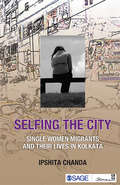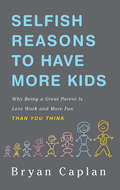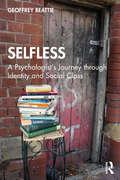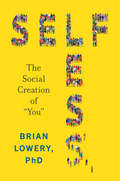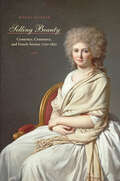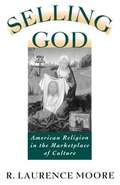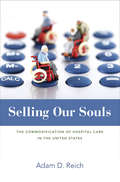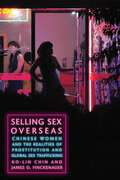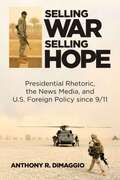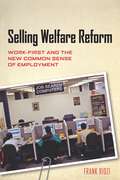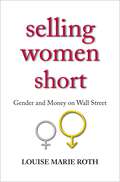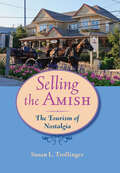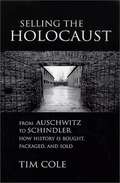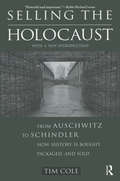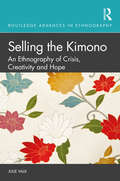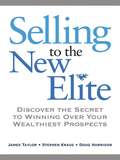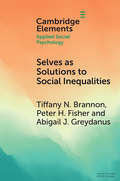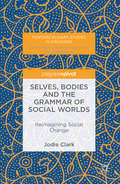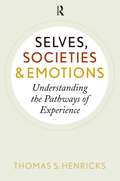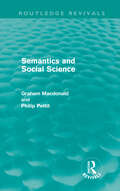- Table View
- List View
Selfing the City: Single Women Migrants and Their Lives in Kolkata
by Ipshita ChandaExploring the quest for ‘self’ in the city through migrant women’s narratives This ethnographical study explores the process of migration and its economic, social and psychological dimensions, throwing light on the connection between middle-class women migrants and city spaces. The study is based on a survey, discussions and interviews, and highlights the emergence of a gendered citizen in an unknown and then gradually made-known or ‘selfed’ city. Through their narratives, these women share their experiences of the emergence of the embodied ‘self’ while negotiating a modern urban space. This includes challenging existing notions of empowerment, intimacy and security, suggesting how what women need brings forth changes in themselves and in the process shapes the future of cities.
Selfish Reasons to Have More Kids: Why Being a Great Parent is Less Work and More Fun Than You Think
by Bryan CaplanWe've needlessly turned parenting into an unpleasant chore. Parents invest more time and money in their kids than ever, but the shocking lesson of twin and adoption research is that upbringing is much less important than genetics in the long run. These revelations have surprising implications for how we parent and how we spend time with our kids. The big lesson: Mold your kids less and enjoy your life more. Your kids will still turn out fine. Selfish Reasons to Have More Kids is a book of practical big ideas. How can parents be happier? What can they change--and what do they need to just accept? Which of their worries can parents safely forget? Above all, what is the right number of kids for you to have? You'll never see kids or parenthood the same way again.
Selfless: A Psychologist's Journey Through Identity And Social Class
by Geoffrey BeattieSelfless is a memoir, reflecting on identity, social class, mobility, education, and on psychology itself; how psychology as a discipline is conducted, how it prioritises objects of study, how it uncovers psychological truths about the world. Geoffrey Beattie takes the reader on a journey through his early life in working-class Belfast, his Ph.D. at Trinity College Cambridge and subsequent academic and professional career, to explore fundamental issues within psychology about social class and social identity. Beattie discusses the difficulties inherent in this process of education and change, and how social background affects how you view academic work and the subject matter of one’s discipline. This book movingly details a life and how it is changed by the processes of education, the psychological pressures when abandoning those close to you, the dissonance within and how it feels and operates. The book takes a critical look at psychology from the other side, and examines the process of becoming ‘selfless’, meaning having little sense of self rather than being overly concerned with the wishes and needs of others. Showing how our early experiences and their influence continues throughout life, Beattie’s emotionally engaging, entertaining, and witty text offers general readers, students, and academics fresh insights into psychology, adaptation and personal change.
Selfless: The Social Creation of “You”
by Brian LowerySocial psychologist and Stanford professor Brian Lowery presents a provocative, powerful theory of identity, arguing that there is no essential "self"—our selves are social creations of those with whom we interact —exploring what that means for who we can be and who we allow others to be. There’s nothing we spend more time with, but understand less, than ourselves. You’ve been with yourself every waking moment of your life. But who—or, rather, what—are you? In Selfless, Brian Lowery argues for the radical idea that the “self” as we know it—that “voice in your head”—is a social construct, created in our relationships and social interactions. We are unique because our individual pattern of relationships is unique. We change because our relationships change. Your self isn’t just you, it’s all around you.Lowery uses this research-driven perspective of selfhood to explore questions of inequity, race, gender, politics, and power structures, transforming our perceptions of how the world is and how it could be. His theory offers insight into how powerful people manage their environment in sophisticated, often unconscious, ways to maintain the status quo; explains our competing drives for deep social connection and personal freedom; and answers profound, personal questions such as: Why has my sense of self evolved over time? Why do I sometimes stop short of changes that I want to make in life? In Selfless, Lowery persuasively breaks down common assumptions and beliefs; his insights are humbling. Despite what many may think, we aren’t islands unto ourselves; we are the creation of the many hands that touch us. We don’t just exist in communities, we are created and shaped by them. Our highs and lows are not only our own but belong to others as well. By recognizing that we are products of relationships—from fleeting transactions to deep associations—we shatter the myth of individualism and free ourselves to make our lives and the world accordingly.
Selling Beauty: Cosmetics, Commerce, and French Society, 1750–1830 (The Johns Hopkins University Studies in Historical and Political Science)
by Morag MartinAn “enjoyable” history of the French cosmetic industry and the evolution of beauty standards and commercial culture during a revolutionary era (European History Quarterly).As the French citizenry rebelled against the excesses of the aristocracy, there was a parallel shift in consumer beauty practices. Powdered wigs, alabaster white skin, and rouged cheeks disappeared in favor of a more natural and simple style.Selling Beauty challenges expectations about past fashions and offers a unique look into consumer culture and business practices. Morag Martin introduces readers to the social and economic world of cosmetic production and consumption, recounts criticisms against the use of cosmetics from a variety of voices, and examines how producers and retailers responded to quickly evolving fashions.Martin shows that the survival of the industry depended on its ability to find customers among the emerging working and middle classes. But the newfound popularity of cosmetics raised serious questions. Critics—from radical philosophes to medical professionals—complained that the use of cosmetics was a threat to social morals and questioned the healthfulness of products that contained arsenic, mercury, and lead. Cosmetic producers embraced these withering criticisms, though, skillfully addressing these concerns in their marketing campaigns, reassuring consumers of the moral and physical safety of their products.Rather than disappearing along with the Old Regime, the commerce of cosmetics, reimagined and redefined, flourished in the early nineteenth century—as political ideals and Enlightenment philosophies radically altered popular sentiment.
Selling Ethnic Neighborhoods: The Rise of Neighborhoods as Places of Leisure and Consumption (Routledge Advances in Geography)
by Jan Rath Volkan AytarWhile ethnic neighborhoods are usually associated with poverty, crime and social problems, they have also emerged as places of leisure and consumption, providing opportunities for numerous entrepreneurs and employees. Local and national governments and other regulatory actors, as well as the media, have started to see and promote these neighborhoods as urban attractions for tourists, city dwellers and others. This book aims to analyze the roles of ethnic entrepreneurs and their associations and governments, and - by extension - of consumers and other actors in the rise of ethnic neighborhoods as places of leisure and consumption. Through case studies, it situates those neighborhoods at the edge of different theoretical debates about urban political economy and the politics of culture, and seeks a dynamic synergy between both.
Selling Free Enterprise: The Business Assault on Labor and Liberalism, 1945-60
by Elizabeth A. Fones-WolfExplores the following topic: PART 1 The Postwar Employer Counteroffensive PART 2 In the Factory PART 3 In the Community PART 4 Institutions PART 5 After the Merger
Selling God: American Religion in the Marketplace of Culture
by R. Laurence Moore[Back Cover] "Religion in America is up for sale. The products range from a plethora of merchandise in questionable taste--such as Bible-based diet books (More of Jesus. Less of Me), Rapture T-shirts (one features a basketball game with half its players disappearing in the Rapture--the caption is "Fast Break"), and bumper stickers and frisbees with inspirational messages--to the unabashed consumerism of Jim Bakker's Heritage USA, a grandiose Christian theme park with giant water slide, shopping mall, and office complex. We tend to think of these phenomena--which also include a long line of multimillionaire televangelists and the almost manic promotion of Christmas giving--as a fairly recent development. But as R. Laurence Moore points out in Selling God, religion has been deeply involved in our commercial culture since the beginning of the nineteenth century. In a sweeping, colorful history that spans over two centuries of American culture, Moore examines the role of religion in the marketplace, revealing how religious leaders have borrowed (and invented) commercial practices to promote religion--and how business leaders have borrowed (and invented) religion to promote commerce. It is a book peopled by a fascinating roster of American originals, including showman P.T. Barnum and painter Frederick Church, film directors D.W. Griffith and evangelist Norman Vincent Peale. Ranging from the rise of gymnasiums and "muscular Christianity," to L. Ron Hubbard's Church of Scientology, Selling God provides both fascinating social history and an insightful look at religion in America."
Selling Modernity: Advertising in Twentieth-Century Germany
by S. Jonathan Wiesen Pamela E. Swett Jonathan R. ZatlinThe sheer intensity and violence of Germany's twentieth century--through the end of an empire, two world wars, two democracies, and two dictatorships--provide a unique opportunity to assess the power and endurance of commercial imagery in the most extreme circumstances. Selling Modernity places advertising and advertisements in this tumultuous historical setting, exploring such themes as the relationship between advertising and propaganda in Nazi Germany, the influence of the United States on German advertising, the use of advertising to promote mass consumption in West Germany, and the ideological uses and eventual prohibition of advertising in East Germany. While the essays are informed by the burgeoning literature on consumer society, Selling Modernity focuses on the actors who had the greatest stake in successful merchandising: company managers, advertising executives, copywriters, graphic artists, market researchers, and salespeople, all of whom helped shape the depiction of a company's products, reputation, and visions of modern life. The contributors consider topics ranging from critiques of capitalism triggered by the growth of advertising in the 1890s to the racial politics of Coca-Cola's marketing strategies during the Nazi era, and from the post-1945 career of an erotica entrepreneur to a federal anti-drug campaign in West Germany. Whether analyzing the growing fascination with racialized discourse reflected in early-twentieth-century professional advertising journals or the postwar efforts of Lufthansa to lure holiday and business travelers back to a country associated with mass murder, the contributors reveal advertising's central role in debates about German culture, business, politics, and society. Contributors. Shelley Baranowski, Greg Castillo, Victoria de Grazia, Guillaume de Syon, Holm Friebe, Rainer Gries, Elizabeth Heineman, Michael Imort, Anne Kaminsky, Kevin Repp , Corey Ross, Jeff Schutts, Robert P. Stephens, Pamela E. Swett, S. Jonathan Wiesen, Jonathan R. Zatlin
Selling Our Souls: The Commodification of Hospital Care in the United States
by Adam Dalton ReichHealth care costs make up nearly a fifth of U.S. gross domestic product, but health care is a peculiar thing to buy and sell. Both a scarce resource and a basic need, it involves physical and emotional vulnerability and at the same time it operates as big business. Patients have little choice but to trust those who provide them care, but even those providers confront a great deal of medical uncertainty about the services they offer. Selling Our Souls looks at the contradictions inherent in one particular health care market—hospital care. Based on extensive interviews and observations across the three hospitals of one California city, the book explores the tensions embedded in the market for hospital care, how different hospitals manage these tensions, the historical trajectories driving disparities in contemporary hospital practice, and the perils and possibilities of various models of care.As Adam Reich shows, the book's three featured hospitals could not be more different in background or contemporary practice. PubliCare was founded in the late nineteenth century as an almshouse in order to address the needs of the destitute. HolyCare was founded by an order of nuns in the mid-twentieth century, offering spiritual comfort to the paying patient. And GroupCare was founded in the late twentieth century to rationalize and economize care for middle-class patients and their employers. Reich explains how these legacies play out today in terms of the hospitals' different responses to similar market pressures, and the varieties of care that result.Selling Our Souls is an in-depth investigation into how hospital organizations and the people who work in them make sense of and respond to the modern health care market.
Selling Sex Overseas: Chinese Women and the Realities of Prostitution and Global Sex Trafficking
by Ko-lin Chin James O. Finckenauer2013 Outstanding Book Award Winner from the Division of International Criminology, American Society of CriminologyEvery year, thousands of Chinese women travel to Asia and the United States in order to engage in commercial sex work. In Selling Sex Overseas, Ko-lin Chin and James Finckenauer challenge the current sex trafficking paradigm that considers all sex workers as victims, or sexual slaves, and as unwilling participants in the world of commercial sex. Bringing to life an on-the-ground portrait of this usually hidden world, Chin and Finckenauer provide a detailed look at all of its participants: sex workers, pimps, agents, mommies, escort agency owners, brothel owners, and drivers. Ultimately, they probe the social, economic, and political organization of prostitution and sex trafficking, contradicting many of the ‘moral crusaders’ of the human trafficking world.
Selling War, Selling Hope: Presidential Rhetoric, The News Media, And U. S. Foreign Policy Since 9/11
by Anthony R. DiMaggioDetails how presidents utilize mass media to justify foreign policy objectives in the aftermath of 9/11.
Selling Welfare Reform: Work-First and the New Common Sense of Employment
by Frank RidziThe 1996 Welfare Reform Act promised to end welfare as we knew it. In Selling Welfare Reform, Frank Ridzi uses rich ethnographic detail to examine how new welfare-to-work policies, time limits, and citizenship documentation radically changed welfare, revealing what really goes on at the front lines of the reformed welfare system. Selling Welfare Reform chronicles how entrepreneurial efforts ranging from front-line caseworkers to high-level administrators set the pace for restructuring a resistant bureaucracy. At the heart of this remarkable institutional transformation is a market-centered approach to human services that re-framed the definition of success to include diversion from the present system, de-emphasis of legal protections and behavioral conditioning of poor parents to accommodate employers. Ridzi draws a compelling portrait of how welfare staff and their clients negotiate the complexities of the low wage labor market in an age of global competition, exposing the realities of how the new "common sense" of poverty is affecting the lives of poor and vulnerable Americans.
Selling Women Short: Gender and Money on Wall Street
by Louise Marie RothRocked by a flurry of high-profile sex discrimination lawsuits in the 1990s, Wall Street was supposed to have cleaned up its act. It hasn't. Selling Women Short is a powerful new indictment of how America's financial capital has swept enduring discriminatory practices under the rug. Wall Street is supposed to be a citadel of pure economics, paying for performance and evaluating performance objectively. People with similar qualifications and performance should receive similar pay, regardless of gender. They don't. Comparing the experiences of men and women who began their careers on Wall Street in the late 1990s, Louise Roth finds not only that women earn an average of 29 percent less but also that they are shunted into less lucrative career paths, are not promoted, and are denied the best clients. Selling Women Short reveals the subtle structural discrimination that occurs when the unconscious biases of managers, coworkers, and clients influence performance evaluations, work distribution, and pay. In their own words, Wall Street workers describe how factors such as the preference to associate with those of the same gender contribute to systematic inequality. Revealing how the very systems that Wall Street established ostensibly to combat discrimination promote inequality, Selling Women Short closes with Roth's frank advice on how to tackle the problem, from introducing more tangible performance criteria to curbing gender-stereotypical client entertaining activities. Above all, firms could stop pretending that market forces lead to fair and unbiased outcomes. They don't.
Selling in Customer Service: Integrating and Coordinating Service and Selling
by Leon Cai"Service" in this book refers to the behaviors and actions of serving customers. "Selling" in this book refers to the behaviors and actions of selling products to customers. Hence, this book is completely different from other books on these subjects—Despite the fact that there are many books on service improvement and many related to selling skills worldwide, there are few books on how service and selling are integrated and coordinated. Primarily, it focuses on the interaction and transition between "the behavior of service" and "the behavior of selling" by sharing methods and skills of how those two are interrelated. This book provides many helpful guidelines and solutions for turning customers’ satisfaction with service into growth in sales. Through many refreshing ideas, the author helps you deeply understand the significance of integration of and conversion between service and selling and the harm of disconnection between service and selling. Many new ideas and viewpoints, which are different from other service books or sales books, are discussed, such as the contention that "over-service and over-selling should be prevented."Instead of: Giving highly complex and abstract definitions of "service" or "selling," this book redefines service and selling with "say YES to customers" and "Make customers say YES" respectively. Insisting that customers’ satisfaction with service will naturally lead to their long-term loyalty, this book emphasizes that customers' satisfaction with service has a shelf lifetime, which will soon fade over time. Taking the achievement of customer satisfaction as the final purpose of service, the author believes that "the end of service is not customer satisfaction, but to create new customer needs and achieve increased sales." Taking "meeting or exceeding customer expectations" as the golden rule, the author insists that "customer expectations need to be reduced first, then satisfied, and upgraded finally." Focusing on the development of customers’ buying needs like other books do, this book focuses oppositely on the research of "why customers have no buying needs."
Selling the Amish: The Tourism of Nostalgia (Young Center Books in Anabaptist and Pietist Studies)
by Susan L. TrollingerMore than 19 million tourists flock to Amish Country each year, drawn by the opportunity to glimpse "a better time" and the quaint beauty of picturesque farmland and handcrafted quilts. What they may find, however, are elaborately themed town centers, outlet malls, or even a water park. Susan L. Trollinger explores this puzzling incongruity, showing that Amish tourism is anything but plain and simple.Selling the Amish takes readers on a virtual tour of three such tourist destinations in Ohio’s Amish Country, the world’s largest Amish settlement. Trollinger examines the visual rhetoric of these uniquely themed places—their architecture, interior decor, even their merchandise and souvenirs—and explains how these features create a setting and a story that brings tourists back year after year.This compelling story is, Trollinger argues, in part legitimized by the Amish themselves. To Americans faced with anxieties about modern life, being near the Amish way of life is comforting. The Amish seem to have escaped the rush of contemporary life, the confusion of gender relations, and the loss of ethnic heritage. While the Amish way supports the idealized experience of these tourist destinations, it also raises powerful questions. Tourists may want a life uncomplicated by technology, but would they be willing to drive around in horse-drawn buggies in order to achieve it?Trollinger's answers to important questions in her fascinating study of Amish Country tourism are sure to challenge readers’ understanding of this surprising cultural phenomenon.
Selling the Holocaust: From Auschwitz to Schindler, How History is Bought, Packaged and Sold
by Tim ColeWhat does the Holocaust mean at the end of the twentieth century? Tim Cole examines three of the Holocaust's most emblematic figures--Anne Frank, Adolf Eichmann and Oskar Schindler--and three of the Holocaust's most visited sites-- Auschwitz, Yad Vashem and the United States Holocaust Memorial Museum--to show us how the Holocaust has been mythologized in the popular imagination. What he finds is disturbing. Cole show us an "Auschwitz-land" where tourists have become the "ultimate ruberneckers" passing by and gazing at someone else's tragedy. He shows us a US Holocaust Museum that provides visitors with a "virtual Holocaust" experience. He shows us that, from movies to museums, the "feel good" Holocaust is being made in America. And, above all, he shows us that as the century closes the frightening reality of the Holocaust is being forgotten.
Selling the Holocaust: From Auschwitz to Schindler; How History is Bought, Packaged and Sold
by Tim ColeCole shows us an "Auschwitz-land" where tourists have become the "ultimate ruberneckers" passing by and gazing at someone else's tragedy. He shows us a US Holocaust Museum that provides visitors with a "virtual Holocaust" experience.
Selling the Kimono: An Ethnography of Crisis, Creativity and Hope (Routledge Advances in Ethnography)
by Julie ValkBased on twelve months of in-depth ethnographic research in Japan with retailers, customers, wholesalers, writers and craftspeople, Selling the Kimono is a journey behind the scenes of a struggle to adapt to difficult economic conditions and declining demand for the kimono. The kimono is an iconic piece of clothing, instantly recognised as a symbol of traditional Japanese culture. Yet, little is known about the industry that makes and sells the kimono, in particular the crisis this industry is currently facing. Since the 1970s, kimono sales have dropped dramatically, craftspeople are struggling to find apprentices, and retailers have closed up shop. Illuminating recent academic investigations into the lived experience of economic crisis, this volume presents a story of an industry in crisis, and the narratives of hope, creativity and resilience that have emerged in response. The ethnographic depth and theoretical contribution to understanding the effects of economic crisis and the transformation of traditional culture will be of broad interest to students, academics and the general public.
Selling to the New Elite: Discover the Secret to Winning Over Your Wealthiest Prospects
by Jim Taylor Stephen Kraus Doug HarrisonBased on unprecedented research, The New Elitetook a behind-the-scenes look at America's most powerful and influential class - what motivates them, how they think, where they shop, and how they really spend their money. In this practical and fascinating follow-up, the authors reveal how salespeople and marketers can hone in on this wealthy class, pique their interest, and convert them into loyal customers. Presenting the best practices behind hundreds of mutually satisfying interactions between salespeople and buyers - based on studies of elite companies such as Lexus, Chanel, Neiman Marcus, Four Seasons, Cartier, and Louis Vuitton - Selling to the New Elitereveals what the truly rich want from brands, what they expect from the marketplace, and how the Great Recession has reshaped their purchasing patterns. Loaded with insight and indispensable techniques, this one-of-a-kind guide shows readers everywhere how they can win over the wealthiest customers. . . and become rich themselves.
Selves as Solutions to Social Inequalities: Why Engaging the Full Complexity of Social Identities is Critical to Addressing Disparities (Elements in Applied Social Psychology)
by Tiffany N. Brannon Peter H. Fisher Abigail J. GreydanusSocial disparities tied to social group membership(s) are prevalent and persistent within mainstream institutions (e.g., schools/workplaces). Accordingly, psychological science has harnessed selves - which are malleable and meaningfully shaped by social group membership(s) - as solutions to inequality. We propose and review evidence that theoretical and applied impacts of leveraging 'selves as solutions' can be furthered through the use of a stigma and strengths framework. Specifically, this framework conceptualizes selves in their fuller complexity, allowing the same social group membership to be associated with stigma, risk, and devaluation as well as strengths, resilience, and pride. We provide evidence that by enacting policies and practices that (a) reduce/minimize stigma and (b) recognize/include strengths, mainstream institutions can more fully mitigate social disparities tied to inclusion, achievement and well-being. Using social groups that vary in status/power we examine implications of this framework including the potential to foster positive, recursive, and intergroup impacts on social inequalities.
Selves, Bodies and the Grammar of Social Worlds
by Jodie ClarkThis book is an invitation to researchers who are committed to social change to look for ideas about transformation in an unexpected place - that is, in the data generated from empirical research. Informed by Critical Discourse Analysis and postmodern theory, it proposes a method of locating, through close grammatical analysis of everyday descriptions of the social world, the desire for alternative transformative structures. Drawing upon insightful analysis of conversational data collected over a period of 12 years from both 'marginalised' and 'mainstream' participants, it reveals innovative ways of imagining social structure. Clark proposes a view of the social world as in an embodied relationship with embodied selves.
Selves, Societies, and Emotions: Understanding the Pathways of Experience
by Thomas S. HenricksBuilding on contributions from sociology, psychology, anthropology, philosophy, literature, and neuroscience, Henricks develops a more general account of how people discover and reproduce the "meanings" of their involvements with others. Among its many themes are treatments of selves as "projections of personhood," of the ways in which self-expression has changed historically and is now experienced in our electronically mediated era, of emotions as "framing judgments," and of ritual, play, communitas, and work as four distinctive "pathways of experience."
Semantics and Social Science (Routledge Revivals)
by Philip Pettit Graham MacDonaldOriginally published in 1980, this book examines the major issues in the philosophy of social science, paying specific attention to cross-cultural understanding, humanism versus scientism, individualism versus collectivism, and the shaping of theory by evaluative commitment. Arguing for a cross-cultural conception of human beings, the authors defend humanism and individualism, and reject the notion that social inquiry is necessarily vitiated by an adherence to values.
Semantics of Violence: Revolt and Political Assassination in Mexico (Cultural Sociology)
by Nelson Arteaga BotelloThis book describes three impactful cases of political violence that broke out in Mexico in 1994, pointing to an important juncture in Mexican political development. At that point, the patrimonial order centered on the PRI and the Mexican presidency entered a momentous crisis that is still ongoing after a quarter of a century and caused the patrimonial order and the civil order to compete over Mexican public life. Such competition, in turn, unfolds at the cultural level on the terrain of three semantics of political violence that shape public debates over violence in Mexico. Ultimately, this book sheds light over the refraction of patrimonial and civil attributions across such cultural terrains.
